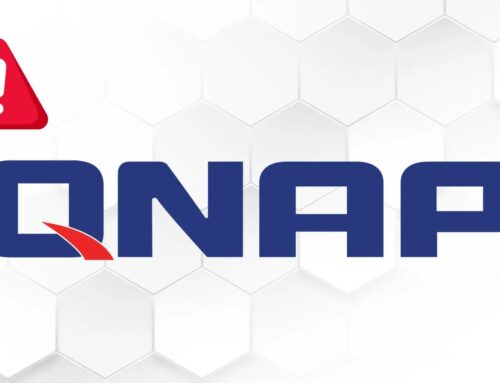
New Stealthy Malware Exploiting Cisco, TP-Link and Other Routers to Gain Remote Control
Urgent Warning: New Stealthy Malware Targets Cisco, TP-Link, and Other Routers for Remote Control
The digital perimeter of our networks is under constant assault, and the latest threat demands immediate attention. A newly uncovered, highly stealthy malware campaign is actively exploiting critical vulnerabilities in network appliances, including routers from prominent manufacturers like Cisco, TP-Link, DrayTek, and Raisecom. This sophisticated attack vector allows adversaries to gain silent, remote control, posing a significant risk to organizational and personal security.
The Threat: Unpacking the Stealthy Router Loader
Throughout July 2025, threat researchers observed the emergence of a new, highly evasive malware specifically designed to compromise network routers. This campaign leverages unauthenticated command injection flaws within embedded web services of various router models. The initial compromise is shockingly simple yet effective: a straightforward HTTP request silently delivers a malicious downloader. This downloader then acts as a loader, facilitating further intrusion and remote control capabilities for the attackers.
The stealthy nature of this loader makes detection particularly challenging. By exploiting existing vulnerabilities in commonly deployed network hardware, attackers bypass traditional endpoint security measures, gaining a foothold deep within the network infrastructure.
Affected Network Appliances and Manufacturers
This evolving threat targets a broad spectrum of network devices, highlighting a widespread vulnerability across different vendor ecosystems. Confirmed affected manufacturers include:
- Cisco
- TP-Link
- DrayTek
- Raisecom
Organizations and individuals utilizing routers from these vendors must be particularly vigilant and prioritize mitigation strategies.
Understanding the Attack Vector: Unauthenticated Command Injection
The core of this attack lies in unauthenticated command injection flaws. This type of vulnerability allows an attacker to execute arbitrary commands on a system without needing to authenticate first. In the context of routers, this means an attacker can send specially crafted HTTP requests to the router’s web interface, and these requests are then parsed and executed as commands by the device’s operating system.
The “unauthenticated” aspect is critical; it means the attacker doesn’t need to know any usernames or passwords to initiate the compromise. This significantly widens the attack surface and lowers the barrier for entry for malicious actors.
Remediation Actions: Protecting Your Network
Given the severity and stealth of this threat, immediate and proactive remediation is essential. Here are actionable steps to protect your network:
- Patch and Update Firmware: This is the most critical step. Regularly check your router manufacturer’s website for the latest firmware updates. Apply all security patches promptly. While specific CVEs related to this campaign have not yet been publicly detailed in the provided source, it is imperative to apply all available updates as they often include fixes for previously unknown vulnerabilities.
- Disable Remote Management: If not absolutely necessary, disable remote web management access to your router. If remote access is required, restrict it to specific, trusted IP addresses and enforce strong, unique passwords.
- Change Default Credentials: Ensure all default usernames and passwords on your router and any network appliances are changed to strong, unique combinations.
- Network Segmentation: Implement network segmentation to isolate critical systems and sensitive data. This can help limit the lateral movement of an attacker if a router is compromised.
- Monitor Network Traffic: Employ network intrusion detection systems (NIDS) and intrusion prevention systems (NIPS) to monitor for unusual traffic patterns or suspicious activity originating from or destined for your router.
- Review Router Logs: Regularly scrutinize router logs for any unusual connection attempts, unexpected reboots, or unauthorized configuration changes.
- Consider a Hardware Refresh: For older routers that are no longer receiving firmware updates, consider replacing them with modern, supported hardware.
Tools for Detection and Mitigation
| Tool Name | Purpose | Link |
|---|---|---|
| Nessus | Vulnerability Scanning, including network devices and web services. | https://www.tenable.com/products/nessus |
| OpenVAS | Open-source vulnerability scanner, useful for identifying injection flaws. | https://www.greenbone.net/en/community-edition/ |
| Wireshark | Network protocol analyzer for deep packet inspection and suspicious traffic detection. | https://www.wireshark.org/ |
| Snort/Suricata | Network intrusion detection/prevention systems (NIDS/NIPS) for anomaly detection. | https://www.snort.org/ |
| OWASP ZAP | Web application security scanner, can assist in identifying web service vulnerabilities. | https://www.zaproxy.org/ |
Conclusion
The emergence of this stealthy malware campaign targeting widely used network routers underscores the persistent and evolving nature of cyber threats. Unauthenticated command injection vulnerabilities are particularly dangerous as they offer attackers a direct and unhindered path to compromise. Proactive firmware updates, robust configuration practices, and continuous monitoring are paramount in defending against such sophisticated attacks. Organizations and individuals must prioritize the security of their network infrastructure to mitigate the significant risks of remote control and data compromise.





